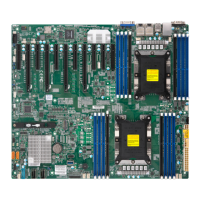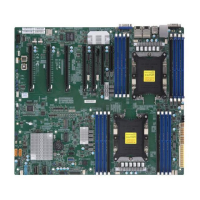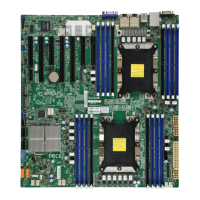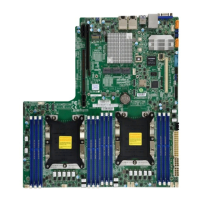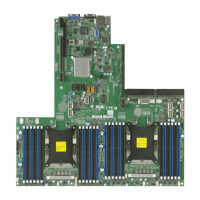
Do you have a question about the Supermicro X11DPU and is the answer not in the manual?
| CPU Socket | LGA 3647 |
|---|---|
| Chipset | Intel C621 |
| Memory Type | DDR4 |
| PCIe 3.0 x8 Slots | 2 |
| M.2 Interface | PCIe 3.0 x4 |
| M.2 Slots | 1 |
| SATA III | 8 |
| USB 3.0 Ports (Rear) | 4 |
| USB 3.0 Ports (Internal) | 2 |
| USB 2.0 Ports | 2 |
| USB 2.0 Ports (Internal) | 2 |
| Video Ports | 1 x VGA |
| Max Memory | 2TB |
| LAN | 2 x 10Gbps |
| Power Connector | 24-pin ATX |
| Memory Slots | 16x 288-pin DIMM |
Manual's purpose and intended audience for system integrators, IT technicians, and end users.
Overview of the X11DPU motherboard's features, processor support, memory, and chipset.
Structure of the manual, outlining chapters and appendices for easy navigation.
Contact information for Supermicro's main corporate office in the USA.
Contact information for Supermicro's European office located in the Netherlands.
Contact information for Supermicro's Asia-Pacific office in Taiwan.
Links to download drivers, utilities, and safety information for system setup.
A quick reference guide to motherboard components, jumpers, and connectors.
Overview of the X11DPU motherboard's key features: CPU, Memory, Chipset, I/O, and more.
Details on Intel Xeon Scalable processors and the Intel C621 chipset.
Overview of health monitoring features and the Baseboard Management Controller (BMC).
Monitoring features including voltage, fan status, and environmental temperature control.
Explanation of Advanced Configuration and Power Interface features for power management.
Importance of a stable power source and recommendations for line filters/surge protectors.
Features of the ASpeed AST2500 Super I/O chip for serial communication.
New advanced power management features supported, including Intel IPNM.
Role of the Management Engine in providing Server Platform Services (SPS).
Precautions and measures to protect components from Electrostatic Discharge (ESD).
Guidelines and tools needed for physically installing the motherboard into a chassis.
Critical warnings and steps for installing CPUs and heatsinks.
Details on supported memory types, capacities, and DIMM installation procedures.
Locations and definitions of the various I/O ports on the motherboard's rear panel.
Description of front control panel header pins for buttons and LEDs.
Overview of power connectors for main supply units, GPUs, and backplanes.
Explanation of how jumpers work and their function in modifying motherboard operations.
Explanation of IPMI LAN, UID, Power, BMC Heartbeat, and Memory Fault LEDs.
Details on NVM Express ports for high-speed SSD connections via PCI-E.
General procedures to troubleshoot system issues, including power and boot failures.
Steps to take before contacting technical support for assistance with system problems.
Answers to common questions regarding memory support, BIOS updates, and power switch function.
Procedures for removing, disposing, and installing the onboard CMOS battery.
Process for obtaining warranty service and returning merchandise for repair.
Introduction to the AMIBIOS Setup utility and BIOS upgrade methods.
Overview of the Main BIOS setup screen and its configurable items like date, time, and version.
Configuration settings for advanced BIOS options like boot features and power management.
Configuration settings for the SMBIOS Event Log, including enabling, disabling, and erasing.
Configuration settings for Intelligent Platform Management Interface (IPMI) and BMC network.
Configuration settings for system security features like passwords and Secure Boot.
Configuration settings for the system's boot process, including mode and device priorities.
Options for saving BIOS settings, discarding changes, and exiting the setup utility.
Table of BIOS beep codes indicating Power-On Self-Test (POST) errors.
Information on additional checkpoint codes and diagnostic tools for boot process analysis.
Instructions for downloading and installing drivers and utilities from Supermicro's FTP site.
Overview of SuperDoctor 5, a hardware monitoring program for system health.
Introduction to UEFI and its role in system management and pre-boot environment.
Procedure for recovering the UEFI BIOS image using a recovery BIOS block.
Method for recovering the main BIOS image using a USB-attached device.
Warnings regarding battery replacement, explosion danger, and proper disposal.
Statements regarding product disposal according to all national laws and regulations.




